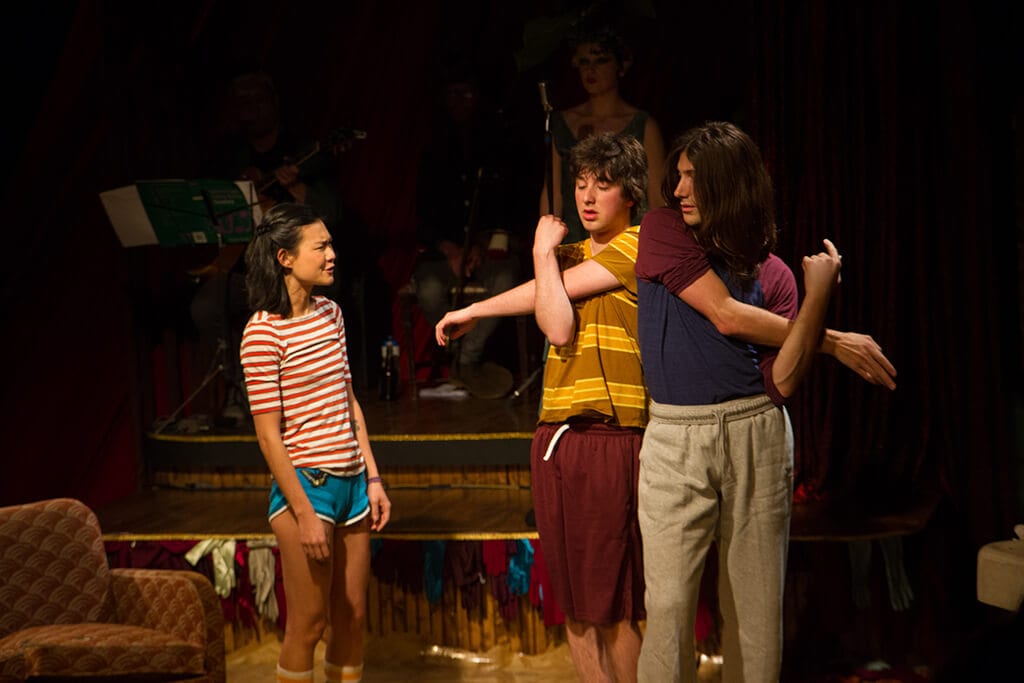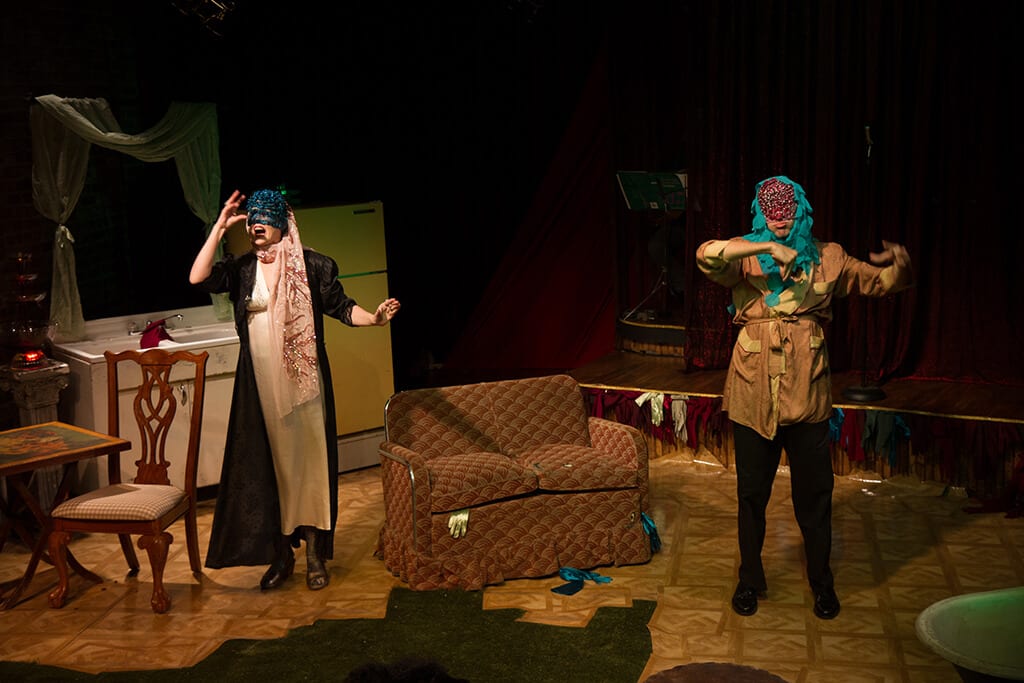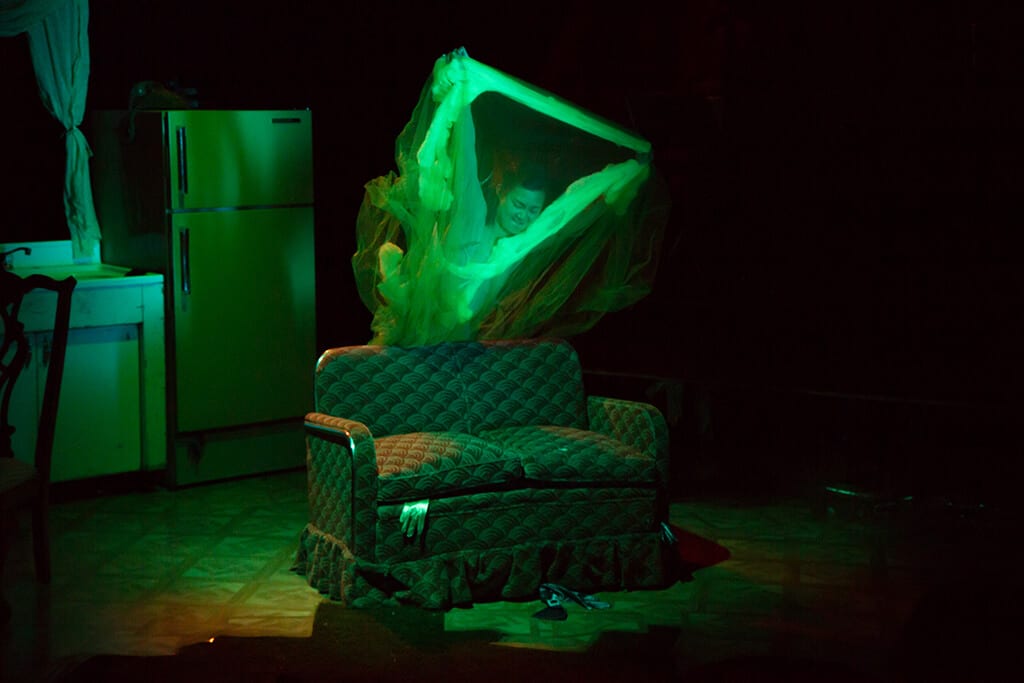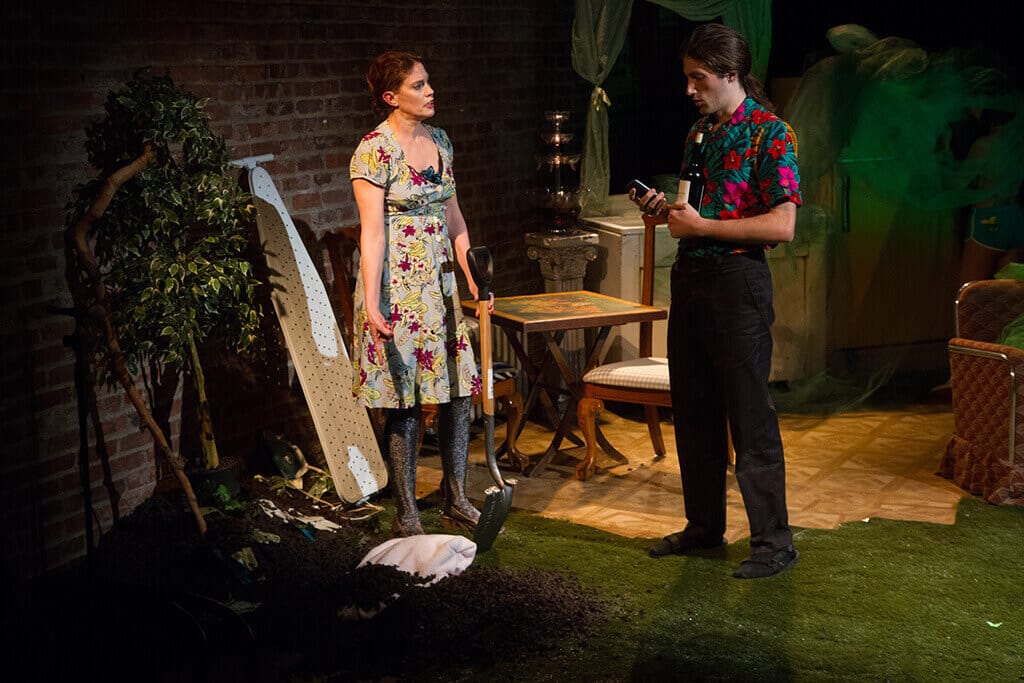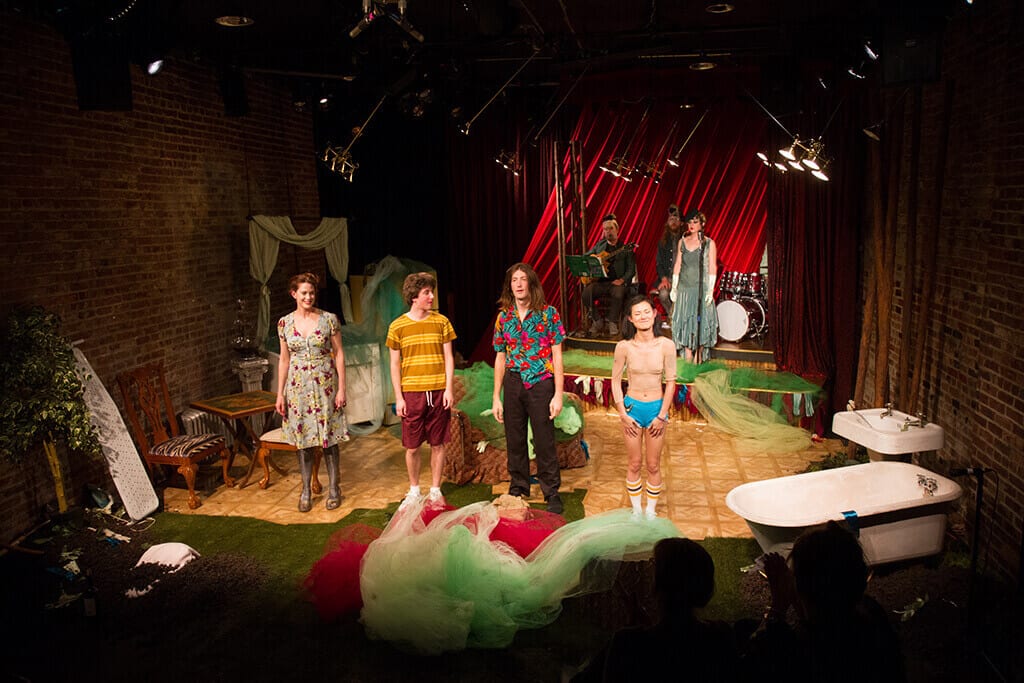Imagine being trapped forever in a life that magnifies your insecurities, awkwardness, and all of your flaws, doomed never to overcome them. This is the premise of Permanent Caterpillar, written and directed by Normandy Raven Sherwood. The show, which abandons plot in favor of the abstract, takes you through the story of a teenage girl named Charity who becomes a “permanent caterpillar.” Charity is frozen in the voracious, awkward, and apparently man-eating state of being a caterpillar, with no hope of transcending her teenage-hood. Nor can she ever, literally or metaphorically, become a butterfly. But how and why does Charity become a permanent caterpillar? Why is it compelling to the audience that this girl can never outgrow her flaws? These questions are left floating by the narrative, which is less of a narrative than snippets of thought, dreams, and memories strung together like beads.
The entire play exists somewhere between reality and a kind of dream world – it’s hard to separate what might be real life and what might be happening in Charity’s mind. This is aided by the costuming, which conveys the 1930s milieu of the play as well as something more ethereal, with colorful gauzes and strange, soft horns protruding from odd places on the body.
Kristine Haruna Lee as Charity really begins to shine as she completes her transition from young girl to “caterpillar.” Costume-wise, she is not much different, save for trading a childish shirt for a sheer top with gauzy horns sticking out from all angles of her torso. But Haruna Lee incorporates the “body horror” and “monstrous physical transformation” promised in the playbill within herself. Her struggle to control her own limbs was equally hilarious and spooky to watch. She jerked, contorted, and at one point inched, facedown, across the floor. Even her face seemed to have gone beyond her control, grinning and grimacing to an oddly endearing, slightly unsettling effect.
There is almost no sense of time or place throughout the show, which wraps it in an abstractness that just served to confuse me most of the time. There was something beautiful about how the cave in which Charity finds herself lost seems to lead back to the apartment where we first meet her. But from there it was hard to keep track of where she was, both physically and mentally, as the scenes change rapidly go by.
The highlight of the show is the band, set up as if in a miniature jazz lounge in the corner of the stage. They perform, according to The Brick Theater’s bulletin, “unnerving songs from a 1930s radio” that set the mood (and sometimes the scene) for the characters. And the band is certainly both unnerving and oddly comforting with their smooth instrumentals and contrastingly eerie songs. At times the Singer (voiced wonderfully by Admiral Grey) allows other characters on her stage or even steps off to join the dialogue, becoming more of a character, crooning the audience through the twists and turns of the unpredictable story.
If the goal of this performance was to present a wonderfully twisted, abstract piece of theater, it did so at the cost of a compelling conclusion. As delightful as Charity’s macabre caterpillar monologues were, I wasn’t really sure what I was supposed to walk away with. However, it’s worth a shot for those into experimental and postmodern theater. The play is a foray into the tireless themes of teenage-hood and coming into one’s own – or not. With each scene more unpredictable than the last and littered with titillating detail, it definitely makes for an interesting and thought-provoking night.


